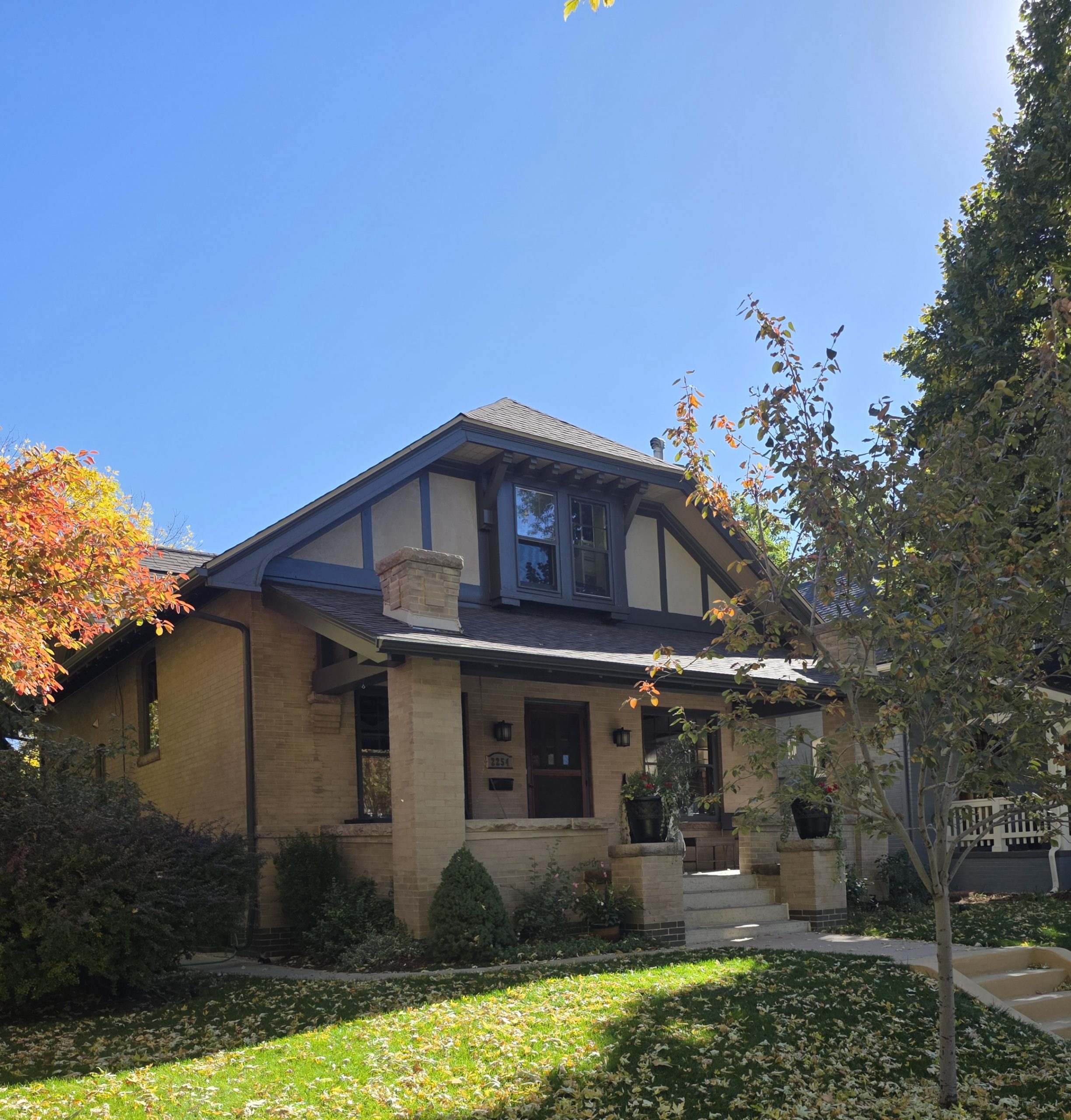By Randy Burgess, Denver Realtor + Relocation + Rightsizing Expert
Few neighborhoods tell Denver’s story quite like Park Hill. Known for its tree-lined streets, architectural variety, and community charm, Park Hill stands as one of the city’s most historically significant and visually captivating enclaves. From stately Colonials to storybook Tudors and early 20th-century Bungalows, this neighborhood is a living museum of residential design — a showcase of how craftsmanship and character have shaped Denver’s urban identity.
Where Architecture and History Intertwine
Developed primarily between the early 1900s and 1940s, Park Hill reflects Denver’s evolution from a frontier town to a thriving metropolis. The neighborhood’s architecture mirrors that transition — solid, symmetrical Denver Squares sit beside romantic English Tudors, gracious Georgian Revivals, and warm Craftsman Bungalows. Together, they form an architectural tapestry that captures more than a century of design sensibilities.
Each home tells a story:
- Denver Squares (American Foursquares) embody the early 20th century’s focus on practicality, proportion, and natural light.
- Tudor Revivals bring European charm with steep gables, arched doorways, and brickwork that feels timeless.
- Colonial and Georgian homes reflect Denver’s period of postwar prosperity, their symmetry and formality balancing elegance with comfort.
- Craftsman Bungalows provide warmth and accessibility, with inviting porches and handcrafted detail that celebrate the artistry of their builders.
In Park Hill, architectural diversity isn’t accidental — it’s the result of thoughtful development, rooted in a time when design was personal and craftsmanship was expected.



A Neighborhood with Architectural Soul
Park Hill’s homes were built to last, and more than a century later, they continue to define one of Denver’s most desirable communities. Many properties retain their original millwork, leaded glass, and ornate masonry, lovingly preserved by homeowners who see themselves as stewards of history. Others have been thoughtfully reimagined — modern kitchens, light-filled additions, and restored outdoor living spaces that blend old and new with seamless grace.
Walk through the neighborhood today, and you’ll see why Park Hill endures: Grand Tudors with ivy-covered façades, stately Colonials with columned porches, and enduring brick Denver Squares that anchor each block with quiet dignity. These architectural hallmarks lend Park Hill its timeless aesthetic — a visual rhythm that feels cohesive yet deeply individual.
More Than Architecture — A Living Legacy
Beyond its beauty, Park Hill remains one of Denver’s most connected and walkable neighborhoods. Its design encourages interaction — front porches close to the sidewalk, broad lawns, and a canopy of mature trees that invite conversation. Residents gather for coffee at Honey Hill Café, meet friends at Spinelli’s Market, and stroll to City Park for weekend picnics and concerts at the pavilion.
This enduring sense of community, layered over the neighborhood’s architectural heritage, is what truly sets Park Hill apart. It’s not just a place to live — it’s a place to belong.
Preserving the Past, Embracing the Future
Modern homeowners are redefining what it means to live in a historic home. Many are restoring original design elements while introducing sustainability upgrades, smart-home technology, and flexible layouts suited for today’s lifestyles. Park Hill demonstrates how preservation and progress can coexist — where architectural legacy doesn’t limit innovation but inspires it.
This careful stewardship has ensured that Park Hill remains both historically authentic and forward-thinking — a rare combination that continues to attract buyers seeking character, community, and connection.
Why Park Hill Still Captivates
Park Hill’s enduring appeal lies in its balance of history, design, and livability. In a city constantly evolving, this neighborhood offers a sense of continuity — a reminder that great architecture and thoughtful planning never go out of style.
Whether you’re drawn to the craftsmanship of a Denver Square, the charm of a Tudor, or the elegance of a Georgian, Park Hill offers something beyond architecture: a deep connection to Denver’s cultural and architectural DNA.

 Facebook
Facebook
 X
X
 Pinterest
Pinterest
 Copy Link
Copy Link



